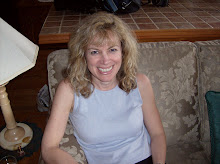 This post was written by guest blogger, Rachel Cohen-Rottenberg, who publishes the blog “Asperger Journeys: Reports from Life on the Spectrum” at http://www.aspergerjourneys.com/
This post was written by guest blogger, Rachel Cohen-Rottenberg, who publishes the blog “Asperger Journeys: Reports from Life on the Spectrum” at http://www.aspergerjourneys.com/.
Last spring, my family and I moved from our 22-acre farm in western Massachusetts to the center of Brattleboro. It was the beginning of a new life together.
Six months later, at the age of 50, I was diagnosed with Asperger's Syndrome, a high-functioning form of autism. Far from being a moment of heartbreak, my diagnosis was a cause for celebration. For the first time, my life made sense.
I had always felt very different from other people. I had always had a sense of apartness, of otherness, for which I could find no explanation.
The subject of autism had always fascinated me, but the idea that I might be autistic seemed absurd. I'd gone to college, made friends, and worked full-time. I was married and raising a family. How could I be autistic? After all, autistic people were locked into their own, strange worlds, unable to communicate or function in society.
Or so I thought.
I've come a long way since then. In the process of understanding myself as an autistic woman, I've had to discard all of the myths I've ever heard on the subject. These myths include the following:
* * *
Myth #1: All autistic people are nonverbal and low functioning.Autism is a spectrum condition. In the U.S., one person in every 150 is autistic, and more than half of all autistic people have Asperger's Syndrome. In addition, many people on the spectrum find themselves between the high-functioning and low-functioning extremes. In fact, some who begin at the more severely affected end of the spectrum can become higher functioning as they grow and learn.
Myth #2: Autism is a mental illness.
Autism is not a psychological disorder. It is a neurological condition in which the brain and nervous system are highly sensitive to sensory stimuli.
When the average person takes in sensory information from the environment, he or she intuitively filters it, prioritizes it, and responds in a purposeful way. For autistic people, sensory processing works very differently. The information comes in full force, without a great deal of filtering.
For example, I have almost no ability to filter auditory information. Anywhere I go, I hear a cacophony of sounds and voices, all at the same high volume. It is difficult for me to have a conversation with a lot of sound in the background, because for me, there is very little background. Any loud, crowded, unstructured situation causes me nearly immediate sensory overload.
I also experience the visual world very intensely. I am constantly scanning my environment, looking at numerous details, and attempting to order them into some sort of pattern. Because the visual world constantly changes, my ordering process never stops. It's only recently that I've realized that most people do not experience the visual world with the same intensity that I do.
Myth #3: Autistic people lack empathy.
Far from lacking empathy, autistic people often have an excess of empathy. However, because of our sensory sensitivities, we may not always be able to show it.
As a child, I was very sensitive and vicariously experienced the suffering of others. For example, in Hebrew school, we watched Nazi footage of what had happened in the concentration camps during the Holocaust. I saw films in which people were lined up at the edge of a ditch and shot. The empathy I felt for the people was immediate. I felt myself experiencing what they were experiencing, as though it were happening to me at that very moment.
For many years since then, I've been aware that when I walk into a room full of people, I enter into the emotional experience of everyone present. It's as though all the emotions come right through me. It all comes in much faster than I can process it, but I feel its impact. I become very disoriented, so much so that I have difficulty feeling or thinking at all.
My husband can usually tell when I'm having this experience. He'll say, "You're gone, aren't you?" to which I can only nod an emphatic "Yes."
Myth #4: Autistic people are antisocial.
Autistic people often have difficulties in communication because we are unable to intuitively read nonverbal cues, such as facial expressions and body language.
I've recently learned that nonverbal cues make up about 90 percent of any conversation. Until my diagnosis, I had no idea that nonverbal language even existed. When conversing, I just hear the words. That's all. And because I just hear the words, I have to spend more time listening, translating, thinking, and responding than a neuro-typical person.
My response times are therefore delayed. People sometimes interpret my delayed response as a lack of interest. Under most circumstances, they are mistaken.
I don't it's possible for me to fully express what a longing I have to spend time with other people. However, a 10-minute conversation with one person can feel like a lot of work. A conversation with more than one person is nearly impossible. And when you add my sensory and emotional sensitivities to the mix, you get a person who requires a great deal of solitude.
Myth #5: Autistic people don't make eye contact because they don't care about what people have to say.I find eye contact very difficult, but it has nothing to do with whether I'm interested in what someone is telling me. In fact, if I'm interested, I usually have to look away from the person in order to think clearly.
Over the years, in an attempt to mask my difficulties, I have developed a number of cloaking devices, including the ability to make and maintain eye contact. However, the skill does not come naturally.
Except for my husband and my daughter, I shy away from eye contact with most people, rather in the same way that I shy away from looking directly into the sun. When I look into a person's eyes, I have such a profound experience of the person that it's overwhelming.
Myth #6: Autistic people can't have families of their own.
Many autistic people are married and raising children. Both my husband and my daughter are neuro-typical, and I adore them.
Myth #7: Autistic people are puzzles with pieces missing.
The use of the "missing puzzle pieces" metaphor to describe autism is a source of great pain for me.
Before my diagnosis, I used to feel that I had pieces missing. Once I discovered that I had Asperger's Syndrome, all of the pieces of my life started coming together to form a coherent, recognizable picture. For the first time in my life, I felt whole.
Myth #8: Autistic people have low intelligence.
Autistic people have different levels of intelligence, just as neuro-typical people do. The test used for measuring intelligence makes a profound difference in the outcome of the assessment.
In a 2007 study, autistic children and neuro-typical children took two IQ tests: the WISC test (which relies on verbal questions and responses) and the Raven's Progressive Matrices test (which measures the ability to do high-level abstraction and complex reasoning).
Not a single autistic child scored in the high-intelligence range of the WISC; in fact, one-third scored in the low-intelligence range. However, one-third of the autistic children scored in the high-intelligence range on the Raven's. Autistic and neuro-typical adults were tested as well, with the same results.
Myth #9: Autistic people do not enjoy life.
For some autistic people, this statement is true, just as it's true for any other group of people. However, many of us find great joy in our loved ones, and we can focus like a laser beam on our special interests for hours on end. My family, my friends, my art, my music, my writing, and my community work are constant sources of joy and satisfaction.
Myth #10: Autism is a disease in need of a cure.
This statement is the focus of passionate debate.
Like many others, I do not consider autism a disease. As researchers at the Swiss Brain-Mind Institute wrote in a 2007 article, "The autistic person is an individual with remarkable and far above average capabilities due to greatly enhanced perception, attention, and memory. In fact, it is this hyper-functionality which could render the individual debilitated."
At present, there is no cure for autism. I understand why some people on the spectrum might want a cure. Being autistic, even at a high-functioning level, is very difficult. For people on the severe end of the spectrum, the condition can be truly disabling.
Personally, I do not want to be cured. Autism makes me who I am, and it has given me many gifts. I am sensitive, empathetic, and artistic. I see great beauty in the world, and I feel its injustices very deeply. I am very direct in my speech, and for that reason, people intuitively trust me.
I would not want to be different. I am proud of who I am. It has taken me 50 years to discover the truth about my life. In the time remaining to me, I plan to mine that truth for all its worth.
* * *
Photo: Dr. Hans Asperger.
Thank you, Rachel,






























































